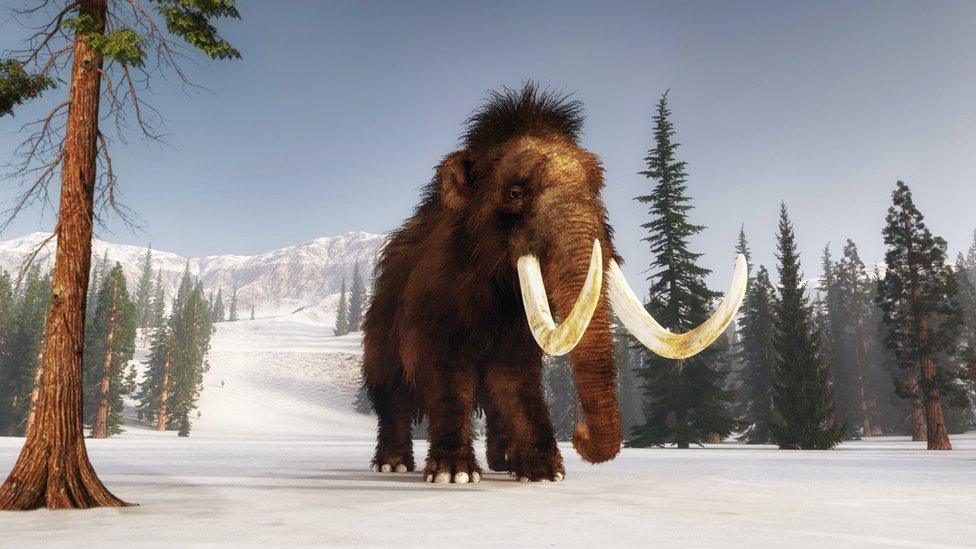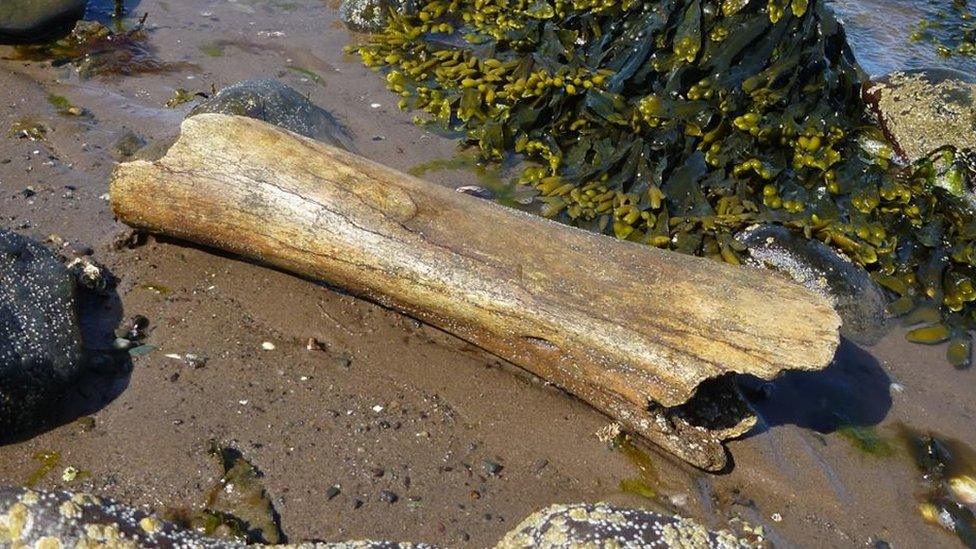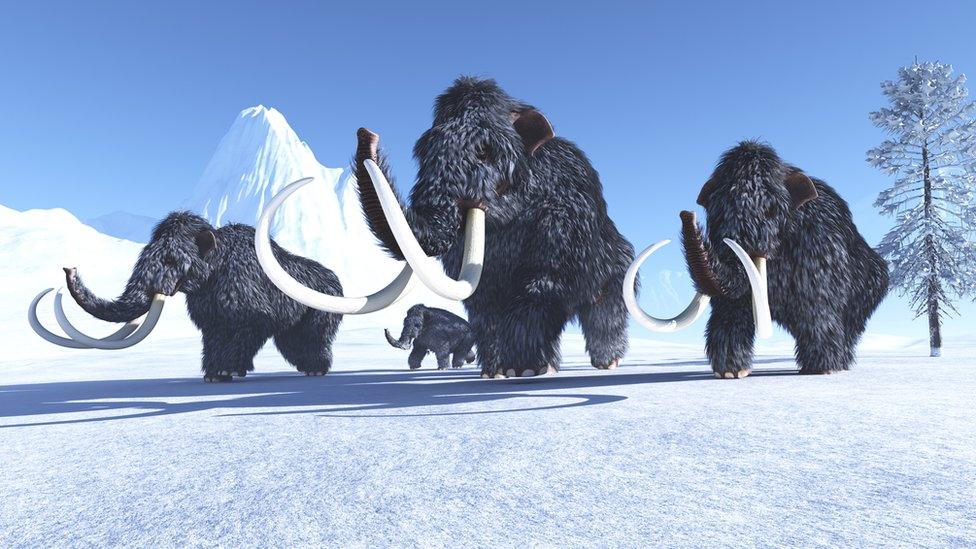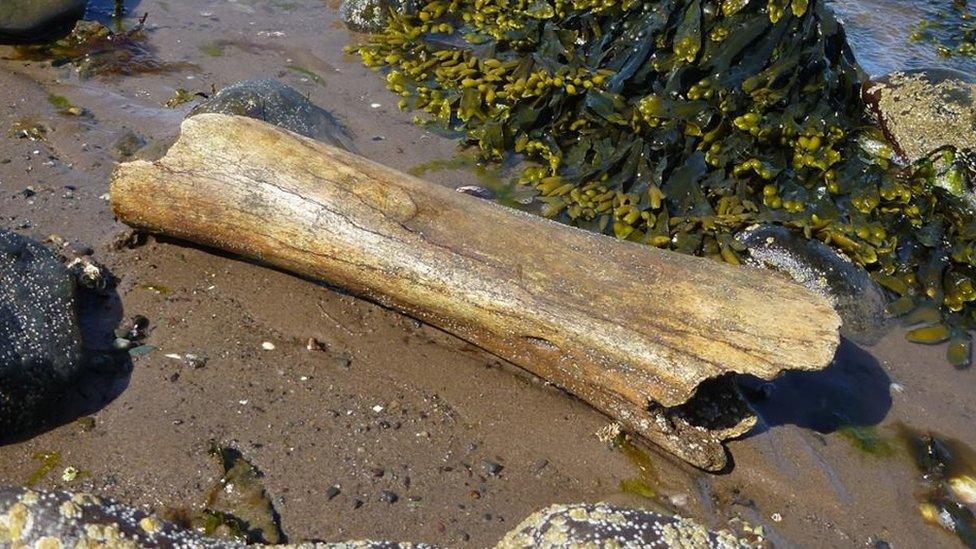Woolly mammoths roamed Galloway 45,000 years ago
- Published

The woolly mammoth was largely extinct by 10,000 years ago
Tests have confirmed that a large bone stumbled across by a marine worker in south-west Scotland belonged to a woolly mammoth.
The find was made in 2018 on the coast near Stranraer and passed to National Museums Scotland (NMS).
It has now been able to confirm that the bone came from a mammoth and dates back about 45,000 years.
It means that they could say with "reasonable certainty" that the creatures roamed the area at that time.

Tests have confirmed the bone dates back about 45,000 years
The bone was discovered by Nic Coombey, co-ordinator of the Solway Coastwise project, while he was out walking on the beach.
He said was about 2ft (60cm) in length, and much bigger than any other bone he had previously found in the area.
He took it to the local museum service who in turn passed it on to NMS.
They described it as a "potentially significant discovery".

The discovery was made on the shore near Stranraer
Dr Andrew Kitchener, NMS principal curator of vertebrates, said: "We are pleased to report that this find is just as exciting as we first suspected.
"We can confirm that it is indeed a mammoth bone, specifically a femur, dating to around 45,000 years old.
"Separately, we have identified a mammoth tooth from the area dating to at least 46,000 years old, and so we can say with reasonable certainty that there were mammoths roaming Galloway at this time."

What was the woolly mammoth?

Also called the northern mammoth or Siberian mammoth, it was a now extinct species of elephant found in fossil deposits in Europe, northern Asia, and North America.
The woolly mammoth was known for its large size, fur, and imposing tusks.
The creatures stood about 3m to 3.7m tall (10ft to 12ft) and weighed between six and eight tonnes.
The woolly mammoth was herbivorous, consuming the stems and leaves of tundra plants and shrubs.
They were largely extinct by about 10,000 years ago, due to the pressures of a warming climate combined with hunting by humans.
Some evidence suggests they survived until as late as 4,300 years ago on Wrangel Island off the coast of northern Russia.
Source: Encyclopaedia Britannica
Related topics
- Published12 June 2018
